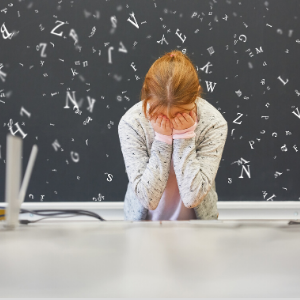Children are very unlikely to become severely ill with COVID-19 infections. However, many children are likely to become anxious about the pandemic, and the disruption it is causing in their lives. Change is stressful, and people around the world are responding to a great deal of change very quickly right now. As adults, maybe we can make some sense of things, adjust our schedules, adapt to working from home and remember ways we’ve been able to cope with stress in the past. How do we help our kids adapt, cope with change and manage stress?
Here are some ideas based on our combined 35 years of clinical experience and the scientific evidence about caring for children’s mental health:
How to address worries, manage stress and prevent anxiety
- Communicate with children honestly in an age-appropriate and reassuring way. Having information can be comforting, but talking and hearing too much about worrisome things can lead to more anxiety. When children express uncertainty or worry, validate those feelings. Then offer reassuring reminders that children are very unlikely to get more than cold symptoms even if they become sick with coronavirus.
- Maintain a sense of normalcy and predictability by keeping up with routines. Do your best to be consistent with daily and weekly schedules. You don’t need to create more stress by keeping a rigid schedule, but work toward a predictable routine by keeping consistent wake up, meal and bed times. Keep school-age children engaged in academic learning.
- Help children understand the ways in which they have control over their own health and safety. Practicing good hand washing, avoiding sick people and not touching their faces are all good ways to stay healthy.
- Point out all the people helping to keep us safe and healthy, and provide for our needs: The doctors, nurses, therapists, teachers, police officers, grocery store workers and mail carriers. To borrow Mr. Rogers’ advice, when scary things are happening in the world “Look for the helpers. You will always find people who are helping.”
- Allow choices and control when possible. Point out ways in which we have control over the current situation: keeping ourselves healthy by following DPH guidelines, choosing to stay connected to people in creative ways, helping ourselves be calm by taking deep breaths. Offer age-appropriate ways to give control: Would you prefer to do your schoolwork in the mornings or evenings? Do you want to go for a walk or a bike ride?
- Ensure that kids get enough sleep. Sleep deprivation causes a marked increase in worry and anxiety. And it can decrease your defenses against viral infections.
- Encourage daily exercise. Self-quarantine doesn’t mean you can’t go outside, just that you can’t be within 6 feet of anyone not in your household. If your family is quarantined, you can continue to play in the yard or go for a walk. Exercise decreases feelings of stress and improves mental health.
- Promote a healthy diet. Have kids eat breakfast, and include protein in meals. Don’t overdo the junk food. Consistent meal times also help keep up a normal daily routine.
- Remember that you as the caregiver provide the best way to learn about self care by modeling this for your child. This includes doing our best to maintain healthy sleep, diet and exercise habits. Don’t be too hard on yourself; you did not prepare to be your child’s teacher and playmate 24/7.
- Yoga, mindfulness exercises and guided meditation (we like the meditation apps Headspace and Insight Timer, and Cosmic Kids yoga and meditation on YouTube) are helpful ways to reduce stress, but don’t forget that spending time with pets, having fun and laughing are very effective, too!
- Stay productive in any sense. Build a birdhouse, solve that 1,000-piece puzzle, try that new recipe. Have children make signs to thank the people who are helping us stay safe and connected. Create a scavenger hunt for younger children. Start an exercise routine. Get some yard work done. Do anything that makes you feel like you are accomplishing something.
- Stay connected and build community. “Social distancing” really means physical distancing, because we actually need social connection in stressful times. Take advantage of opportunities from school and extracurricular classes to keep your child in touch with their community. Encourage children to participate in Zoom and Google meetings set up by their school, and FaceTime with their friends. Going for a walk or drive to look for rainbows, lights, stuffed animals, etc., is a fun way to remind kids of our connection as a community.
- Balance screen time. Many of the above strategies involve using screens. It’s helpful to remember screen guidelines, as too much screen time can lead to symptoms similar to anxiety and attention disorders. However, balance is important in these trying times. So much is to be gained by maintaining social connections, productivity by keeping up with schoolwork, and relaxation through distraction and guided meditation. One important rule around screens is to turn off all screens about an hour before bedtime so they do not interfere with sleep.
How to help kids who are feeling anxious
- Build a sense of safety. Remind kids that they are safe in the here and now. Make note of the physical safety of their home, bedroom and the space that their body is in right now. Remind them that we have ways to stay in control of our health and safety. We can even find control in our own body by slowing down and deepening our breath right now.
- Help your child think of ways for self-soothing/calming. They can take deep breaths, spend time with a family pet, or do something distracting. Meditations and yoga for kids are widely available on YouTube and other apps.
- Provide a comforting environment to all of the senses. You can use sensory tools like weighted blankets, putty and fidget toys. Tap into each of the five senses: feel hugs or massage, taste comfort foods, smell flowers or candles, listen to music or an audiobook, look for signs of spring or artwork. Pay attention to your child’s specific sensory needs, and provide as much or as little input as is comforting to them.
- Distraction with a favorite movie, playing games together or doing an art project.
- When anxiety is interfering with your child’s ability to enjoy fun things, participate in activities, or get to sleep, then it may be necessary to seek assistance from a mental health professional. A trained therapist can provide tools for your child to help manage anxiety and improve their mental health in this very stressful time. Contact your pediatrician, school staff or your health insurance provider to get connected to a mental health professional for screening and help with anxiety.
Sarah Slagsvol, LICSW, is an independently licensed clinical social worker at Family Counseling Associates-Beverly providing counseling for patients at Garden City Pediatrics. Ian Sklaver, MD is a board-certified pediatrician, providing health care for children at Garden City Pediatrics in Beverly.

